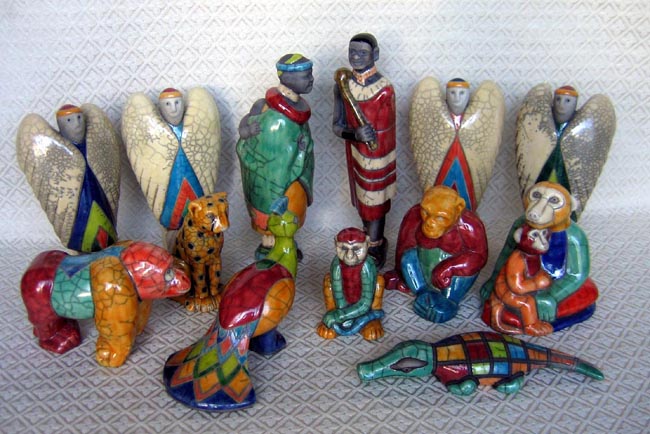OUR COLLECTION — AFRICA — SOUTH AFRICA 433. 2ND RAKU NATIVITY
This Nativity is made in a workshop near Cape Town, South Africa. The 13 pieces include Mary dressed as a woman from the Ndebele tribe with baby Jesus carried on her back (His head, arm, and hand are visible in the photo), Joseph dressed as a man from the Maasai tribe, four angels, and seven African animals (from left to right): a gorilla, a cheetah, a peacock, a rhesus monkey, a crocodile, a chimpanzee, and a mother baboon with baby. The Joseph figure measures 10.25 inches tall.
Raku pottery originated in ancient Japan. It is the process of manufacture that gives the pottery the Raku identity. South African Raku is unique as to its bright colors and geometric designs. The fired bisqueware is heated a second time in a kiln to 950 degrees C and then allowed to come in contact with cooler air so the glaze cracks unpredictably. Then the hot pieces are placed in a bed of sawdust. The smoke from the smoldering sawdust then gives these crackles and any unglazed surface their dark coloring. No two pieces are the same, nor are the colors exactly the same.
Raku pottery originated in ancient Japan. It is the process of manufacture that gives the pottery the Raku identity. South African Raku is unique as to its bright colors and geometric designs. The fired bisqueware is heated a second time in a kiln to 950 degrees C and then allowed to come in contact with cooler air so the glaze cracks unpredictably. Then the hot pieces are placed in a bed of sawdust. The smoke from the smoldering sawdust then gives these crackles and any unglazed surface their dark coloring. No two pieces are the same, nor are the colors exactly the same.
